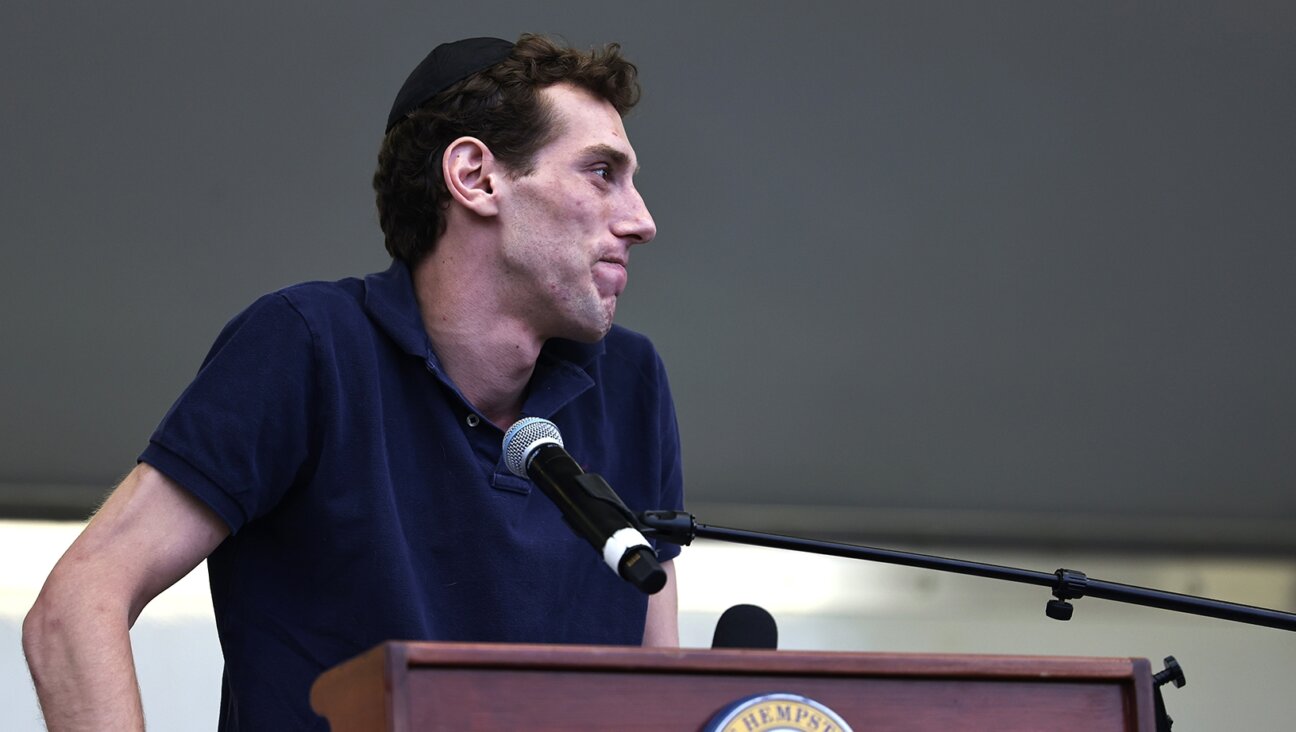The Portable Legacy
Lubavitch Hasidim may be torn over the earthly status of their erstwhile rebbe, Menachem Mendel Schneerson, but if there is a matter on which the movement’s adherents can find common ground, it is the sacredness of the sect’s world headquarters at 770 Eastern Parkway in the Crown Heights neighborhood of Brooklyn.
On the surface, 770 Eastern Parkway would seem an odd symbol for the Lubavitch movement. A neo-gothic structure that once housed a medical clinic, the building, from an architectural standpoint, is utterly unremarkable. Lubavitch Hasidim bought it in 1940, shortly after the sixth Lubavitcher rebbe, Yosef Yitzhak Schneersohn, and a group of his followers left the Soviet Union to escape Nazi persecution. He, in turn, was succeeded by son-in-law Menachem Mendel Schneerson, who became the seventh Lubavitcher rebbe in 1951. This rebbe’s legendary energy and charisma led all that was associated with him to become sanctified in the eyes of his flock, including the building where he held court.
And so, as emissaries groomed by Schneerson fanned out across the globe, bringing their unique brand of outreach to Jews from Alaska to Zaire, the 770 blueprint became part of the movement’s transportable legacy. There are no fewer than 13 “770s” in the world today — some big, some small, some exact replicas of the original — with versions in the United States, Israel, Canada, Italy, Brazil, Argentina and Australia.
Few are better able to address the special place the building holds for Lubavitchers than Max Becher and Andrea Robbins, a husband-and-wife team that has worked for the past 10 years to assemble a photographic record of the building and its unusual trajectory.
Becher and Robbins’s overall artistic vision springs from a concern with rootedness and rootlessness, or what they call “the transportation of place.” What does it mean, say, to have a “New York” in Las Vegas? A “Germany” in Washington State? It’s a set of concerns uniquely well suited to the Lubavitch experience, as here is a movement that has undergone a double transplantation — from Eastern Europe to Brooklyn, and now from Brooklyn to all corners of the globe.
The artists’ concern with place — with finding the strange in the familiar and the familiar in the strange — has for the two been a lifelong endeavor. At young ages, both were, in a sense, strangers in strange lands. Becher, a native of Düsseldorf, came to New York at 13 and was struck by what he calls the “impermanence” of the city’s built landscape, which he found so unlike the “thicker, more solid” environment he associated with home. Robbins, meanwhile, grew up in just such a thick and solid environment, the colonial town of Marblehead, Mass. But as a Jew in so Waspy an enclave, she was made to feel like an outsider.
While their photos are stark, almost clinical, the two spoke of the buildings they captured on film — and of the Lubavitchers they met along the way — with enormous affection. “The 770s and those who build them make up a kind of global network,” Becher said. “We were made part of that network fairly quickly.”
Asked whether they had any favorites, Becher and Robbins assumed a cautious tone, as if worried they might offend those they left out.
“I love the one near Tel Aviv, because it’s so accurate and then the backdrop is so sparse,” Becher said. “Of course the Brazilian one is very nice, because it’s so little. It’s just kind of touching somehow.”
“We have favorites in different ways,” Robbins began diplomatically, “but then there’s the little one [at a summer camp] in Montreal. To have Hasidim in bathing suits was fun for us. It’s not how you would imagine them.”
Gabriel Sanders is the associate editor of the Forward.
To view Robbins and Becher’s entire 770 portfolio, visit www.robbinsbecher.com.
















